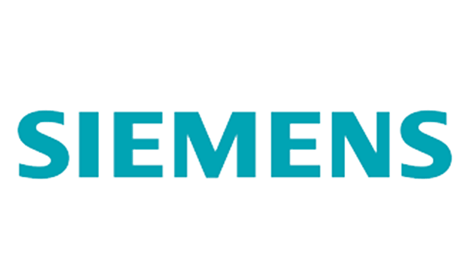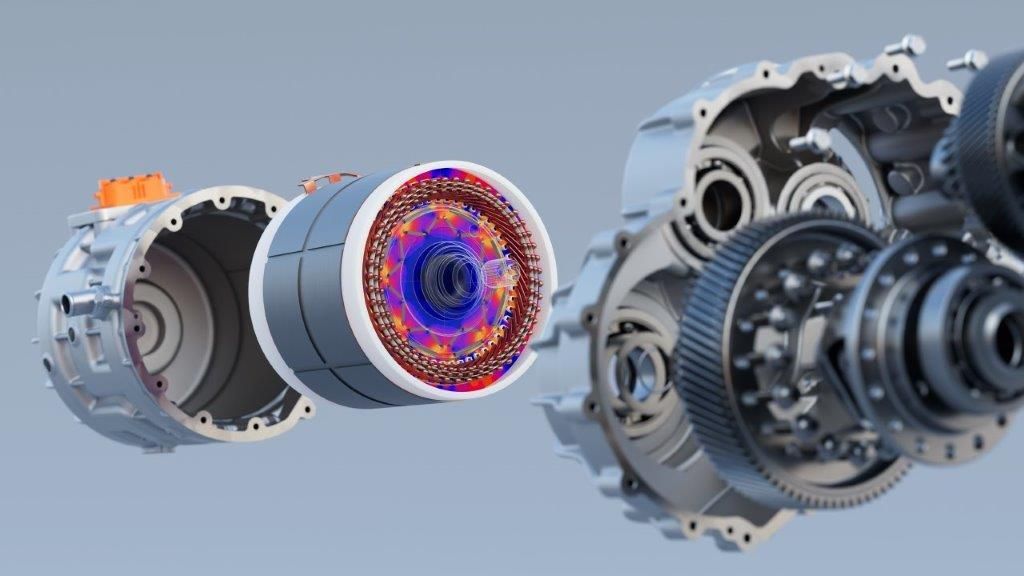Siemens – Siemens strengthens leadership in industrial software and AI with acquisition of Altair Engineering
- Acquisition of Altair Engineering Inc., a global leader in computational science and artificial intelligence software, strengthens Siemens’ position as a leading technology company
- Creates the world’s most complete AI-powered design and simulation portfolio
- Altair shareholders to receive USD 113 per share, representing an enterprise value of USD 10 billion; the offer price represents a 19% premium to Altair’s unaffected closing price on October 21, 2024
- Siemens expects to achieve significant cost and revenue synergies
- The transaction is expected to be EPS (pre-PPA) accretive by year two post-closing
Siemens has signed an agreement to acquire Altair Engineering Inc., a leading provider of software in the industrial simulation and analysis market. Altair shareholders will receive USD 113 per share, representing an enterprise value of approximately USD 10 billion. The offer price represents a 19% premium to Altair’s unaffected closing price on October 21, 2024, the last trading day prior to media reports regarding a possible transaction. With this acquisition Siemens strengthens its position as a leading technology company and its leadership in industrial software.
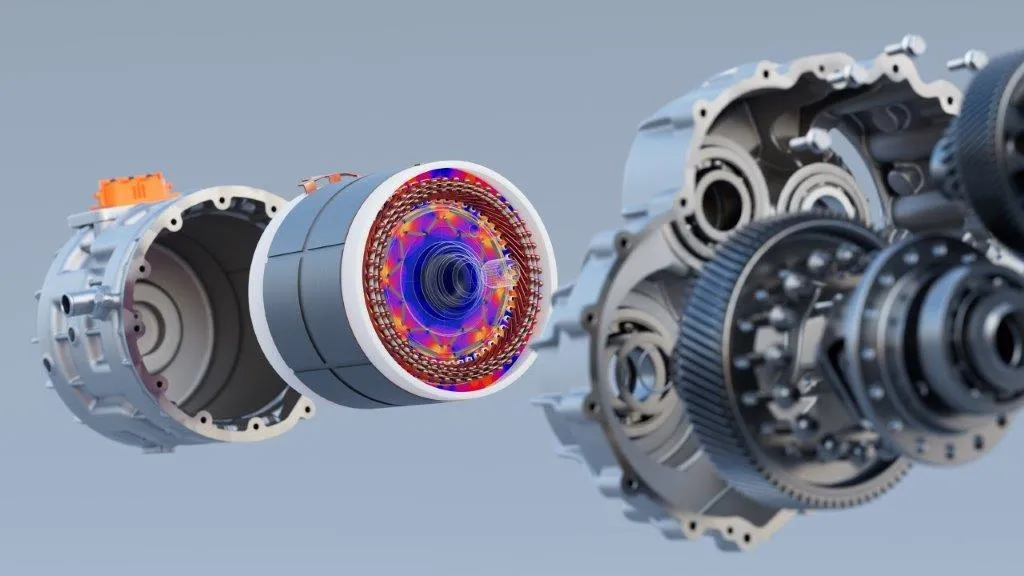
“Acquiring Altair marks a significant milestone for Siemens. This strategic investment aligns with our commitment to accelerate the digital and sustainability transformations of our customers by combining the real and digital worlds. The addition of Altair’s capabilities in simulation, high performance computing, data science, and artificial intelligence together with Siemens Xcelerator will create the world’s most complete AI-powered design and simulation portfolio,” said Roland Busch, President and CEO of Siemens AG.
“It is a logical next step: we have been building our leadership in industrial software for the last 15 years, most recently, democratizing the benefits of data and AI for entire industries.” “The acquisition of Altair is highly synergistic, underpinning Siemens’ stringent capital allocation, balancing investments and shareholder returns on the basis of a strong balance sheet. The transaction is expected to be EPS accretive two years post-closing,” said Ralf P. Thomas, CFO of Siemens AG.
“This acquisition represents the culmination of nearly 40 years in which Altair has grown from a startup in Detroit to a world-class software and technology company. We have added thousands of customers globally in manufacturing, life sciences, energy and financial services, and built an amazing workforce, and innovative culture,” said James Scapa, Altair’s founder and CEO. “We believe this combination of two strongly complementary leaders in the engineering software space brings together Altair’s broad portfolio in simulation, data science, and HPC with Siemens’ strong position in mechanical and EDA design. Siemens’ outstanding technology, strategic customer relationships, and honest, technical culture is an excellent fit for Altair to continue its journey driving innovation with computational intelligence.”
By adding Altair’s highly complementary simulation portfolio, with strength in mechanical and electromagnetic capabilities, we are enhancing our comprehensive Digital Twin to deliver a full-suite, physics-based, simulation portfolio as part of Siemens Xcelerator. Altair’s data science and AI-powered simulation capabilities allow anyone, from engineers to generalists, to access simulation expertise to decrease time-to-market and accelerate design iterations. Additionally, Altair’s data science capabilities will unlock Siemens’ industrial domain expertise in product lifecycle and manufacturing processes.
Significant synergies and EPS accretive
The transaction will strongly increase Siemens’ digital business revenue by +8%, adding EUR ~600 million to Siemens’ digital business revenue of EUR 7.3 billion as reported in fiscal year 2023. Siemens expects to achieve significant revenue synergies especially from cross-selling of the highly complementary portfolios and from providing Altair full access to Siemens’s global footprint and global industrial enterprise and customer base with a revenue impact of more than USD 500 million p.a. mid-term growing to more than USD 1.0 billion p.a. long-term. Moreover, Siemens aims to achieve cost synergies on a short-term basis, with an EBITDA impact of more than USD 150 million p.a. by year two post-closing.
The transaction is expected to be EPS (pre-PPA) accretive by year two post-closing. The acquisition will be fully cash-financed from Siemens’ existing resources and its capacity to fully finance the transaction based on Siemens’ strong balance sheet, as underlined by its exceptional rating, which Siemens is committed to maintain. Preemptive deleveraging is supported by significant cash proceeds from the already closed Innomotics divestment. In addition, Siemens has substantial financing potential from the sale of shares in listed entities. Closing of the transaction is subject to customary conditions and is expected within the second half of calendar year 2025.
Altair Engineering is a global leader in computational science and artificial intelligence (AI) that provides software and cloud solutions in Simulation and Analysis, Data Science and AI, and High-Performance Computing, enabling organizations across all industries to compete more effectively and drive smarter decisions in an increasingly connected world. Founded in 1985, Altair Engineering Inc. went public in 2017 (Nasdaq) and is headquartered in Troy, Michigan (USA). Out of its more than 3,500 employees, approximately 1,400 employees work in R&D.
SourceSiemens
EMR Analysis
More information on Siemens: See full profile on EMR Executive Services
More information on Dr. Roland Busch (President and Chief Executive Officer, Siemens AG): See full profile on EMR Executive Services
More information on Ralf P. Thomas (Member of the Managing Board and Chief Financial Officer, Siemens AG): See full profile on EMR Executive Services
More information on Xcelerator by Siemens: https://www.sw.siemens.com/en-US/digital-transformation/ + Xcelerator provides the engineering and manufacturing software, services and application development platform to blur the boundaries between industry domains. Companies can use this technology today to build the products of tomorrow. Turn complexity into your competitive advantage with Xcelerator.
Siemens Xcelerator consists of three pillars:
- Portfolio: A curated, modular portfolio of IOT-enabled hardware and software based on standard application programming interfaces, facilitating the integration of information technology (IT) and operational technology (OT).
- Ecosystem: A growing ecosystem of partners.
- Marketplace: Interactions and transactions among customers, partners and developers.
More information on Altair Engineering Inc.: https://altair.com/ + Altair is a global leader in computational intelligence that provides software and cloud solutions in simulation, high-performance computing (HPC), data analytics, and AI. Altair enables organizations across all industries to compete more effectively and drive smarter decisions in an increasingly connected world – all while creating a greener, more sustainable future.
Founded in 1985, Altair Engineering Inc. went public in 2017 (Nasdaq) and is headquartered in Troy, Michigan (USA). Out of its more than 3,500 employees, approximately 1,400 employees work in R&D.
More information on James R. Scapa (Founder, Chairman and Chief Executive Officer, Altair Engineering Inc.): https://investor.altair.com/corporate-governance/management + https://www.linkedin.com/in/james-scapa-56a4b527/
More information on Innomotics (previously Siemens Large Drives Applications) by KPS Capital Partners: https://www.innomotics.com/en.html + With a trusted legacy of more than 150 years of engineering expertise, we are and have always been the backbone of reliable motion for industries and infrastructure worldwide. Now, we’re about to take this to the next level. It’s time for a new brand. It’s time for a powerful team. It’s time for us – for Innomotics.
Our mission is to support you, our customers and partners, and your business on the road to the future – sustainable, digital, reliable. Redefining reliable motion for a better tomorrow. Together.
Motors and drives are our business, redefining performance from fossil combustion to intelligent converters, from check-time per day to uptime per lifecycle, from simply on/off to everything smart in between. Our most powerful engine: more than 15,000 dedicated experts, doers, colleagues. For them, engineering the future means keeping businesses in motion – in e-motion. We are the “we” in power – and we can empower you.
Innomotics is a global leader in electrical motor and large-drive business with €3.3 billion in revenue and employs approximately 15,000 people
More information on Michael Psaros (Co-Founder and Managing Partner, KPS Capital Partners): https://www.kpsfund.com/team/partners + https://www.linkedin.com/in/michael-psaros/
EMR Additional Notes:
- AI – Artificial Intelligence:
- https://searchenterpriseai.techtarget.com/definition/AI-Artificial-Intelligence +
- Artificial intelligence is the simulation of human intelligence processes by machines, especially computer systems.
- As the hype around AI has accelerated, vendors have been scrambling to promote how their products and services use AI. Often what they refer to as AI is simply one component of AI, such as machine learning. AI requires a foundation of specialized hardware and software for writing and training machine learning algorithms. No one programming language is synonymous with AI, but well a few, including Python, R and Java, are popular.
- In general, AI systems work by ingesting large amounts of labeled training data, analyzing the data for correlations and patterns, and using these patterns to make predictions about future states. In this way, a chatbot that is fed examples of text chats can learn to produce lifelike exchanges with people, or an image recognition tool can learn to identify and describe objects in images by reviewing millions of examples.
- AI programming focuses on three cognitive skills: learning, reasoning and self-correction.
- What are the 4 types of artificial intelligence?
- Type 1: Reactive machines. These AI systems have no memory and are task specific. An example is Deep Blue, the IBM chess program that beat Garry Kasparov in the 1990s. Deep Blue can identify pieces on the chessboard and make predictions, but because it has no memory, it cannot use past experiences to inform future ones.
- Type 2: Limited memory. These AI systems have memory, so they can use past experiences to inform future decisions. Some of the decision-making functions in self-driving cars are designed this way.
- Type 3: Theory of mind. Theory of mind is a psychology term. When applied to AI, it means that the system would have the social intelligence to understand emotions. This type of AI will be able to infer human intentions and predict behavior, a necessary skill for AI systems to become integral members of human teams.
- Type 4: Self-awareness. In this category, AI systems have a sense of self, which gives them consciousness. Machines with self-awareness understand their own current state. This type of AI does not yet exist.
- Machine Learning (ML):
- Developed to mimic human intelligence, it lets the machines learn independently by ingesting vast amounts of data, statistics formulas and detecting patterns.
- ML allows software applications to become more accurate at predicting outcomes without being explicitly programmed to do so.
- ML algorithms use historical data as input to predict new output values.
- Recommendation engines are a common use case for ML. Other uses include fraud detection, spam filtering, business process automation (BPA) and predictive maintenance.
- Classical ML is often categorized by how an algorithm learns to become more accurate in its predictions. There are four basic approaches: supervised learning, unsupervised learning, semi-supervised learning and reinforcement learning.
- Deep Learning (DL):
- Subset of machine learning, Deep Learning enabled much smarter results than were originally possible with ML. Face recognition is a good example.
- DL makes use of layers of information processing, each gradually learning more and more complex representations of data. The early layers may learn about colors, the next ones about shapes, the following about combinations of those shapes, and finally actual objects. DL demonstrated a breakthrough in object recognition.
- DL is currently the most sophisticated AI architecture we have developed.
- Computer Vision (CV):
- Computer vision is a field of artificial intelligence that enables computers and systems to derive meaningful information from digital images, videos and other visual inputs — and take actions or make recommendations based on that information.
- The most well-known case of this today is Google’s Translate, which can take an image of anything — from menus to signboards — and convert it into text that the program then translates into the user’s native language.
- Machine Vision (MV):
- Machine Vision is the ability of a computer to see; it employs one or more video cameras, analog-to-digital conversion and digital signal processing. The resulting data goes to a computer or robot controller. Machine Vision is similar in complexity to Voice Recognition.
- MV uses the latest AI technologies to give industrial equipment the ability to see and analyze tasks in smart manufacturing, quality control, and worker safety.
- Computer Vision systems can gain valuable information from images, videos, and other visuals, whereas Machine Vision systems rely on the image captured by the system’s camera. Another difference is that Computer Vision systems are commonly used to extract and use as much data as possible about an object.
- Generative AI (GenAI):
- Generative AI technology generates outputs based on some kind of input – often a prompt supplied by a person. Some GenAI tools work in one medium, such as turning text inputs into text outputs, for example. With the public release of ChatGPT in late November 2022, the world at large was introduced to an AI app capable of creating text that sounded more authentic and less artificial than any previous generation of computer-crafted text.
- https://searchenterpriseai.techtarget.com/definition/AI-Artificial-Intelligence +
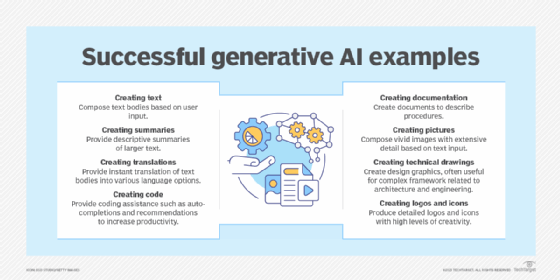
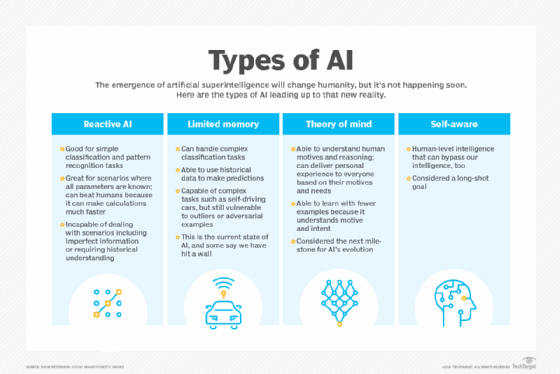
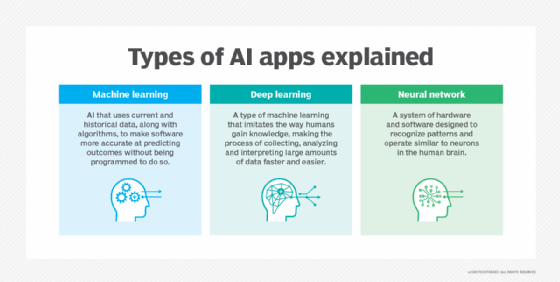
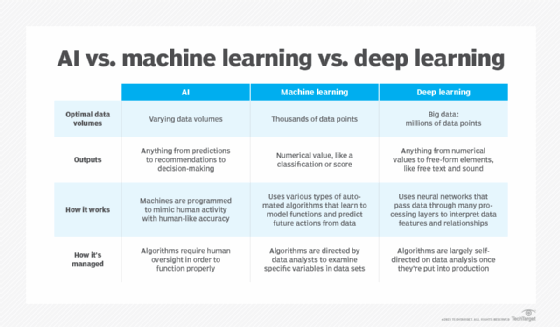
- Edge AI Technology:
- Edge artificial intelligence refers to the deployment of AI algorithms and AI models directly on local edge devices such as sensors or Internet of Things (IoT) devices, which enables real-time data processing and analysis without constant reliance on cloud infrastructure.
- Simply stated, edge AI, or “AI on the edge“, refers to the combination of edge computing and artificial intelligence to execute machine learning tasks directly on interconnected edge devices. Edge computing allows for data to be stored close to the device location, and AI algorithms enable the data to be processed right on the network edge, with or without an internet connection. This facilitates the processing of data within milliseconds, providing real-time feedback.
- Self-driving cars, wearable devices, security cameras, and smart home appliances are among the technologies that leverage edge AI capabilities to promptly deliver users with real-time information when it is most essential.
- Multimodal Intelligence and Agents:
- Subset of artificial intelligence that integrates information from various modalities, such as text, images, audio, and video, to build more accurate and comprehensive AI models.
- Multimodal capabilities allows to interact with users in a more natural and intuitive way. It can see, hear and speak, which means that users can provide input and receive responses in a variety of ways.
- An AI agent is a computational entity designed to act independently. It performs specific tasks autonomously by making decisions based on its environment, inputs, and a predefined goal. What separates an AI agent from an AI model is the ability to act. There are many different kinds of agents such as reactive agents and proactive agents. Agents can also act in fixed and dynamic environments. Additionally, more sophisticated applications of agents involve utilizing agents to handle data in various formats, known as multimodal agents and deploying multiple agents to tackle complex problems.
- Computational Science:
- The use of computers, coding, and programs to solve mathematical models. Mathematical models represent real-world problems in subjects such as biology or physics. Computational scientists use advanced modeling and simulation to help solve these mathematical models.
- Some of the disciplines traditionally associated with computational science include: atmospheric sciences (e.g. weather forecasting, climate and ocean modelling, seismology etc.), astrophysics, nuclear engineering, chemistry, fluid dynamics, structural analysis and material research.
- Data scientists focus on machine learning algorithms, whereas computer scientists focus on software design.
- Earning Per Share (EPS):
- Company’s net income subtracted by preferred dividends and then divided by the average number of common shares outstanding. The resulting number serves as an indicator of a company’s profitability. It is common for a company to report EPS that is adjusted for extraordinary items and potential share dilution.
- The higher a company’s EPS, the more profitable it is considered to be.
- Earnings per share value is calculated as net income (also known as profits or earnings) divided by available shares. A more refined calculation adjusts the numerator and denominator for shares that could be created through options, convertible debt, or warrants. The numerator of the equation is also more relevant if it is adjusted for continuing operations.
- HPC (Hight-Performance Computing):
- Practice of aggregating computing resources to gain performance greater than that of a single workstation, server, or computer. HPC can take the form of custom-built supercomputers or groups of individual computers called clusters.
- EDA (Electronic Design Automation):
- Electronic Design Automation (EDA) is a specific category of hardware, software, services and processes that use computer-aided design to develop complex electronic systems like printed circuit boards, integrated circuits and microprocessors.
- Electronic Design Automation, or EDA, is a market segment consisting of software, hardware, and services with the collective goal of assisting in the definition, planning, design, implementation, verification, and subsequent manufacturing of semiconductor devices, or chips. Regarding the manufacturing of these devices, the primary providers of this service are semiconductor foundries, or fabs. These highly complex and costly facilities are either owned and operated by large, vertically integrated semiconductor companies or operated as independent, “pure-play” manufacturing service providers. This latter category has become the dominate business model.
- EDA tools play a critical role in semiconductor chip manufacturing for the following reasons: They’re used to vet semiconductor manufacturing processes to ensure they deliver the required performance and density. This part of EDA is called technology computer-aided design (TCAD).
- Digital Twin:
- Digital Twin is most commonly defined as a software representation of a physical asset, system or process designed to detect, prevent, predict, and optimize through real time analytics to deliver business value.
- A digital twin is a virtual representation of an object or system that spans its lifecycle, is updated from real-time data, and uses simulation, machine learning and reasoning to help decision-making.
- EBITA:
- Earnings before interest, taxes, and amortization (EBITA) is a measure of company profitability used by investors. It is helpful for comparing one company to another in the same line of business.
- EBITA = Net income + Interest + Taxes + Amortization
- EBITDA:
- Earnings before interest, taxes, depreciation, and amortization (EBITDA) is an alternate measure of profitability to net income. By including depreciation and amortization as well as taxes and debt payment costs, EBITDA attempts to represent the cash profit generated by the company’s operations.
- EBITDA and EBITA are both measures of profitability. The difference is that EBITDA also excludes depreciation.
- EBITDA is the more commonly used measure because it adds depreciation—the accounting practice of recording the reduced value of a company’s tangible assets over time—to the list of factors.
- EV/EBITDA (Enterprise Multiple):
- Enterprise multiple, also known as the EV-to-EBITDA multiple, is a ratio used to determine the value of a company.
- It is computed by dividing enterprise value by EBITDA.
- The enterprise multiple takes into account a company’s debt and cash levels in addition to its stock price and relates that value to the firm’s cash profitability.
- Enterprise multiples can vary depending on the industry.
- Higher enterprise multiples are expected in high-growth industries and lower multiples in industries with slow growth.

